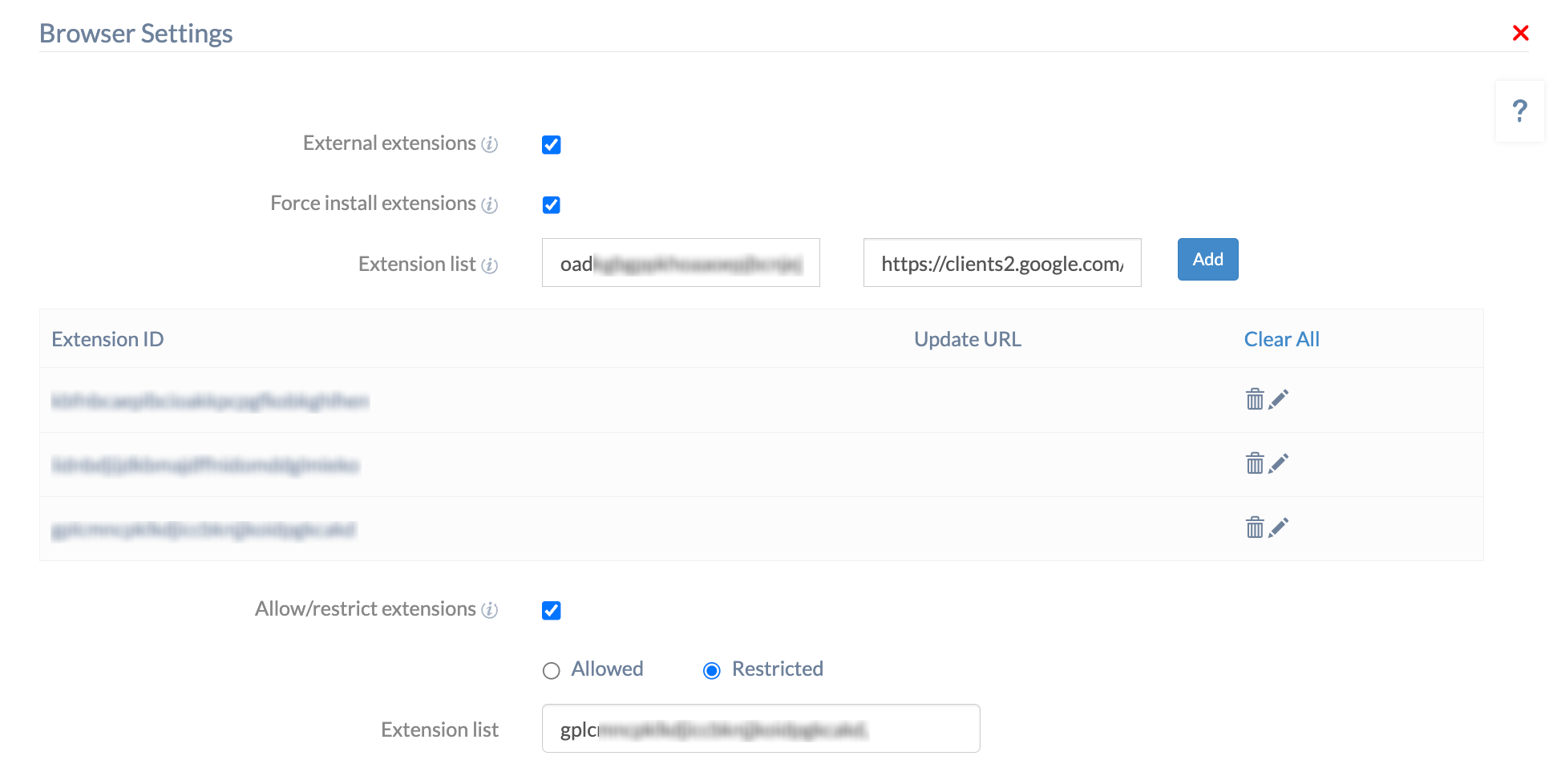Category filter
How to configure browser settings on Windows devices?
In this document you will learn how to configure Google Chrome browser extension settings on Windows devices from Hexnode UEM.
Google Chrome browser extensions are software programs designed to enhance the browsing experience by extending the browser’s functionality. These extensions offer features such as automating tasks, blocking ads, managing passwords, taking notes, proofreading digital content, etc. Adding these capabilities to your web pages improves your browsing experience by simplifying actions and optimizing your workflow.
Using Hexnode UEM’s Browser Settings policy, IT administrators can configure, auto-install, allow, restrict, and enforce specific extensions in the Google Chrome browser on their Windows devices.
Configure Browser Extension settings policy on Windows devices
The following steps will guide you on how to configure and install pre-defined extensions for Google Chrome from Hexnode UEM.
- Log in to your Hexnode UEM portal. Navigate to the Policies tab. Click on New Policy to create a new one. Enter the Policy Name and Description in the provided fields.
(or)
Click on any policy to edit an existing one. - Navigate to Windows. Select Browser Settings under Configurations.
- Click on Configure.
Configure, restrict and install browser extensions for Google Chrome browser using the following settings:
| Settings | Description |
|---|---|
| External extensions | This setting, when unchecked, will prevent the installation of external extensions in the Google Chrome browser. External extensions are Chrome extensions developed by third-party developers that are not listed on the official Chrome Web store. |
| Force install extensions | When checked, this setting enables the option to provide a list of extensions that will be automatically installed and enforced, preventing users from uninstalling or turning them off. |
| Extension list
(Available only when Force install extensions is enabled) |
Provide a list of extensions in the following format:
|
| Allow/restrict extensions | When checked, this setting provides the option to allow or restrict browser extensions. Provide a list of extension IDs, separated by commas, in the field. Use this setting to either allow only the provided extensions or restrict them. |
Apply the Browser settings policy to target entities using Hexnode UEM
There are two ways by which you can associate the policy to configure Google Chrome Browser Extension settings on Windows devices.
If you haven’t saved the policy yet,
- Navigate to Policy Targets.
- Click on + Add Devices.
- Search, and select the devices to which you need to apply the policy. Click OK.
- Click on Save to apply the policies to the devices.
If you’ve already saved the policy and taken to the page which displays the policy list,
- Select the required policy.
- Click on Manage and select Associate Targets.
- Search and select the Devices/ Users/ Device Groups/ User Groups/ Domains to which you need to apply the policy. Click Associate.
What happens at the device end?
Upon associating the policy, start the Google Chrome browser. The extensions configured under the “force install extensions” option will be installed and can be accessed from the top right corner of the browser. They will be labeled as “Installed by your administrators.” The options to uninstall or remove these extensions will be disabled by the browser. Extensions added under the “Allow/restrict extensions” option will be labeled as “Your admin has blocked this item (Extension ID)” in the Chrome Web Store.




